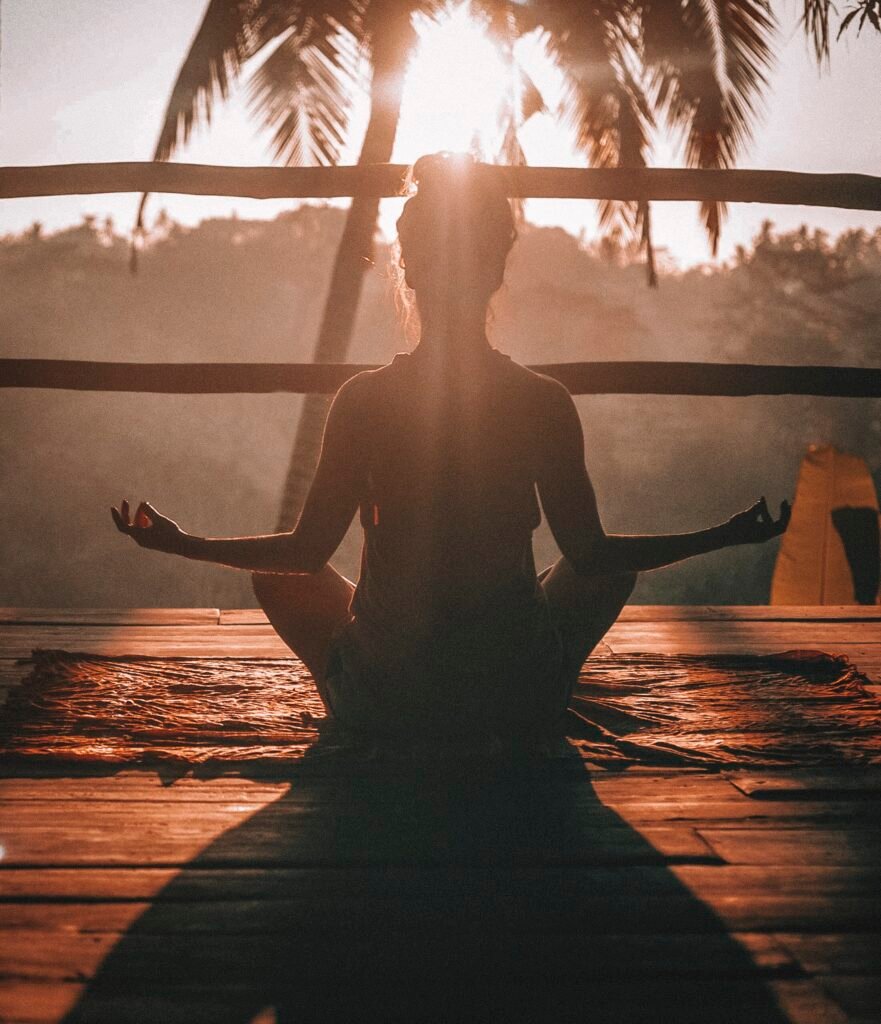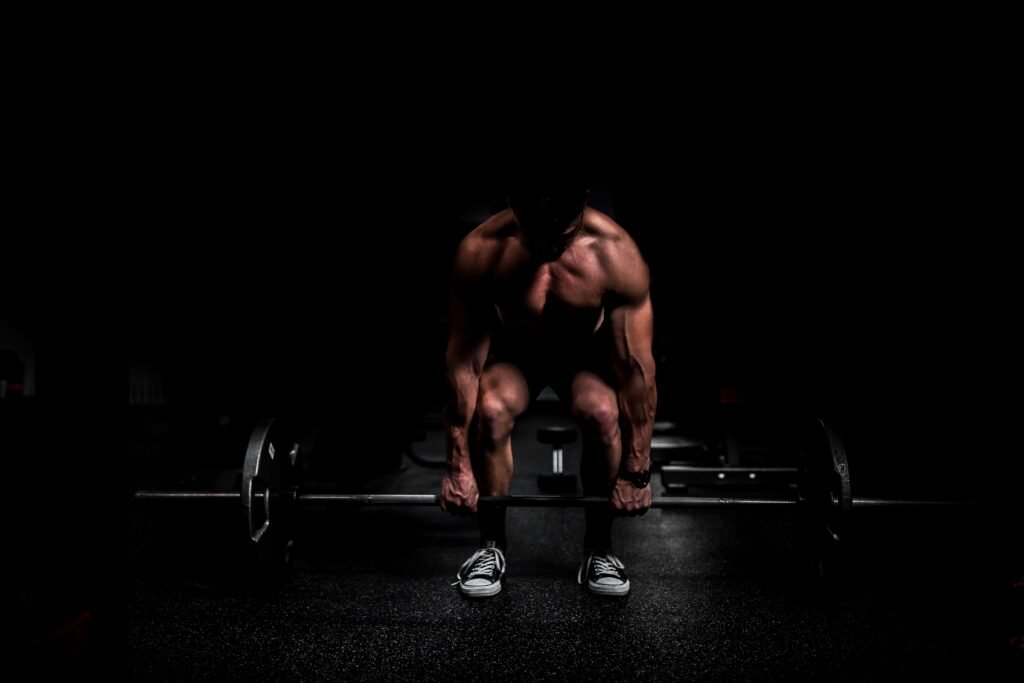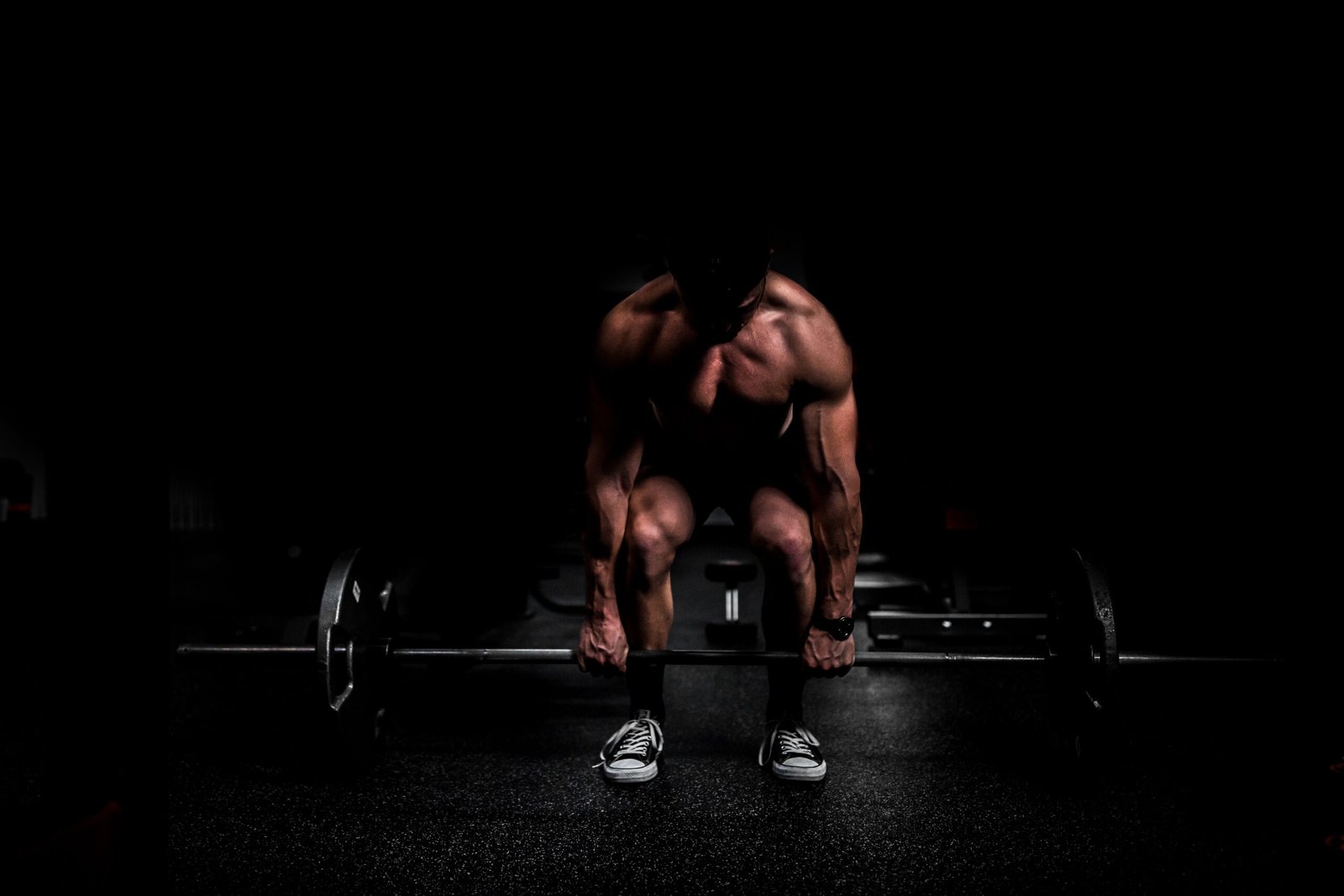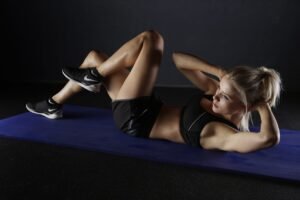Effective Home Workout for Weight Loss
Are you tired of going to the gym and spending hours on end trying to shed those extra pounds? Look no further! This article will guide you through an effective home workout routine that will help you reach your weight loss goals without ever leaving the comfort of your own home. With simple yet challenging exercises and minimal equipment, you can develop a sustainable fitness routine that fits into your busy schedule. Get ready to sweat and see results as you embark on this journey towards a healthier, fitter you.

This image is property of images.unsplash.com.
Benefits of Home Workouts
Convenience
One of the biggest advantages of home workouts is the convenience they offer. With a home workout, you have the freedom to exercise whenever it suits you. You don’t have to worry about rushing to the gym before it closes or dealing with crowded fitness classes. You can simply roll out of bed and start your workout right away. This convenience is especially beneficial for busy individuals or those who have a hard time fitting exercise into their schedules. By eliminating the need to travel to a gym, home workouts make it easier to prioritize your fitness routine.
Cost-savings
Another major benefit of home workouts is the cost savings. Gym memberships and fitness classes can be quite expensive, but with a home workout, you can skip these costs altogether. All you really need is some basic exercise equipment, such as dumbbells or resistance bands, which can be purchased at an affordable price. Additionally, many exercise routines can be done without any equipment at all. By eliminating the need for expensive gym memberships or equipment, home workouts make fitness much more accessible to everyone.
Privacy and comfort
For many people, the thought of exercising in front of others can be intimidating. Home workouts provide a solution to this problem by offering privacy and comfort. When you exercise at home, there are no prying eyes or judgmental glances. You can wear whatever you feel comfortable in and focus solely on your workout. This sense of privacy can also be motivating, as it allows you to push yourself without any distractions. Additionally, being able to exercise in an environment that you’re familiar with, such as your living room or backyard, can make the whole experience more enjoyable and less intimidating.
Setting Up Your Home Workout Space
Choose a dedicated area
When setting up your home workout space, it’s important to choose a dedicated area where you can focus and have enough room to move around. This could be a spare room, a corner of your living room, or even your backyard. Selecting a specific area for your workouts helps to create a sense of routine and separates your exercise space from the rest of your home.
Clear the space
Before starting your workout, make sure to clear the area of any objects that could pose a safety hazard. Remove furniture, obstacles, and loose items to create a safe and clutter-free environment. This will prevent accidents and allow you to move freely without any limitations.
Organize your equipment
If you have exercise equipment, it’s important to keep it organized and easily accessible. Arrange your dumbbells, resistance bands, or yoga mats in a designated storage area or on a shelf. This not only keeps your workout space tidy but also saves you time and frustration when searching for specific items during your workouts.

This image is property of images.unsplash.com.
Warm-up Exercises
Jumping jacks
Jumping jacks are a classic warm-up exercise that gets your heart rate up and prepares your muscles for more intense movements. Start by standing with your feet together and your arms at your sides. Jump up, spreading your legs wide and raising your arms above your head. Jump again, returning to the starting position. Repeat for 1-2 minutes to get your blood pumping and increase your body temperature.
High knees
High knees are a dynamic warm-up exercise that targets your lower body and improves your cardiovascular endurance. Stand tall with your feet hip-width apart. Lift your right knee towards your chest and quickly switch to lifting your left knee. Continue alternating knees while pumping your arms. Aim to bring your knees as high as possible while maintaining a fast pace. Perform high knees for 1-2 minutes to warm up your leg muscles and increase your heart rate.
Squats
Squats are an effective warm-up exercise that targets your quads, hamstrings, and glutes. Stand with your feet shoulder-width apart, toes slightly turned out. Bend your knees and lower yourself down as if you’re sitting back into a chair. Keep your chest up, core engaged, and heels planted on the ground. Pause at the bottom, then push through your heels to stand back up. Perform 10-12 squats to loosen up your lower body and improve your range of motion.
Arm circles
Arm circles are a simple yet effective warm-up exercise that loosens up your shoulder joints and activates your upper body muscles. Stand with your feet shoulder-width apart and extend your arms out to the sides parallel to the floor. Start making small circles with your arms, gradually increasing the size of the circles. After 10-15 seconds, change direction and make circles in the opposite direction. Perform 2 sets of 20 seconds each to warm up your shoulders and increase blood flow to your upper body.
Standing side bends
Standing side bends are a great warm-up exercise that stretches and strengthens your obliques and core muscles. Stand with your feet shoulder-width apart, arms at your sides, and shoulders relaxed. Gently bend to one side, reaching your arm towards the ground while keeping your opposite arm extended. Engage your core and feel the stretch along your side. Return to the starting position and repeat on the other side. Perform 10-12 side bends on each side to warm up your core and improve your flexibility.
Cardiovascular Exercises
Jumping rope
Jumping rope is a fantastic cardiovascular exercise that improves your heart health, coordination, and agility. Start by holding the handles of the jump rope with your palms facing towards you. Swing the rope over your head and jump over it as it passes under your feet. Land softly on the balls of your feet and keep your knees slightly bent. Start with short intervals, such as 30 seconds, and gradually increase the duration as your fitness improves. Aim for 5-10 minutes of jumping rope to get your heart rate up and burn calories.
Running in place
Running in place is a convenient cardiovascular exercise that requires minimal space and no equipment. Stand with your feet hip-width apart and lift your knees alternately to waist height while jogging on the spot. Swing your arms naturally and engage your core for balance. Increase your speed and intensity as your fitness level improves. Running in place for 10-15 minutes is a great way to elevate your heart rate and burn fat.
High-intensity interval training (HIIT)
High-intensity interval training (HIIT) involves alternating between short bursts of intense exercises and periods of active recovery. This type of cardiovascular exercise is highly effective for burning calories and improving aerobic capacity. For example, you could do 30 seconds of high-intensity exercises, such as burpees or squat jumps, followed by 1 minute of active recovery, such as walking or jogging in place. Repeat this cycle for 15-20 minutes to challenge your cardiovascular system and boost your metabolism.
Cycling
Cycling is a low-impact cardiovascular exercise that can be done indoors on a stationary bike or outdoors on a traditional bicycle. Whether you prefer to ride in the comfort of your home or explore the great outdoors, cycling is a great way to get your heart rate up and burn calories. Start with shorter rides and gradually increase the duration and intensity as your fitness improves. Aim for 30-60 minutes of cycling to reap the cardiovascular benefits and enjoy a scenic workout.

This image is property of images.unsplash.com.
Strength Training Exercises
Push-ups
Push-ups are a classic strength training exercise that targets your chest, shoulders, triceps, and core muscles. Start in a high plank position with your hands slightly wider than shoulder-width apart. Lower your body down by bending your elbows, keeping your core engaged and glutes tight. Push through your palms to return to the starting position. If you’re new to push-ups, you can modify the exercise by performing them on your knees or against a wall. Aim for 2-3 sets of 10-15 push-ups to improve upper body strength.
Squats
Squats are not only a great warm-up exercise, but also an excellent strength training exercise that targets your lower body. Stand with your feet shoulder-width apart, toes slightly turned out. Bend your knees and lower yourself down as if you’re sitting back into a chair. Keep your chest up, core engaged, and heels planted on the ground. Pause at the bottom, then push through your heels to stand back up. To increase the difficulty, you can hold dumbbells or a barbell across your shoulders. Aim for 3-4 sets of 10-12 squats to build lower body strength.
Lunges
Lunges are a unilateral strength training exercise that targets your quads, hamstrings, glutes, and calves. Start by standing with your feet hip-width apart. Take a large step forward with your right foot and lower your body down until your right knee is bent at a 90-degree angle. Keep your chest up, core engaged, and front heel planted on the ground. Push through your front heel to return to the starting position and repeat on the other side. Perform 2-3 sets of 10-12 lunges on each leg to strengthen your lower body.
Plank
The plank is a powerful core-strengthening exercise that engages your abs, lower back, and stabilizer muscles. Start in a high plank position, with your hands directly under your shoulders and your body in a straight line from head to toe. Engage your core, squeeze your glutes, and hold this position for as long as you can without compromising your form. If holding a high plank is too challenging, you can modify the exercise by resting on your forearms instead of your hands. Aim for 2-3 sets of 30-60 second planks to develop a strong and stable core.
Bicep curls
Bicep curls are an effective strength training exercise that targets your biceps, forearms, and shoulders. Start by standing tall with a dumbbell in each hand, palms facing forward. Keeping your elbows close to your sides, exhale and curl the weights towards your shoulders by contracting your biceps. Pause at the top, then slowly lower the weights back down to the starting position. Perform 2-3 sets of 10-12 bicep curls to build arm strength and tone your upper body.
Tricep dips
Tricep dips are a great bodyweight exercise that targets the triceps, shoulders, and chest. Start by sitting on the edge of a sturdy chair or bench, with your hands gripping the edges next to your hips. Walk your feet forward and slide your hips off the chair. Bend your elbows and lower your body down, keeping your shoulders down and elbows pointing backward. Push through your palms to straighten your arms and return to the starting position. Aim for 2-3 sets of 10-12 tricep dips to strengthen and tone your arms.
Core Exercises
Crunches
Crunches are a classic core exercise that targets your rectus abdominis, the muscles responsible for those coveted six-pack abs. Start by lying on your back with your knees bent and feet flat on the ground. Place your hands behind your head, keeping your elbows wide. Exhale and lift your shoulder blades off the ground, using your abs to curl your upper body towards your knees. Inhale and slowly lower your upper body back down to the starting position. Perform 2-3 sets of 15-20 crunches to strengthen your core.
Mountain climbers
Mountain climbers are a dynamic core exercise that also targets your upper body and lower body muscles. Start in a high plank position, with your hands directly under your shoulders and your body in a straight line. Engage your core and bring your right knee towards your chest, then quickly switch to bringing your left knee towards your chest. Continue alternating knees as if you’re running in place while in a plank position. Perform 2-3 sets of 30-60 seconds of mountain climbers to engage your entire core and burn calories.
Russian twists
Russian twists are an effective core exercise that targets your obliques, the muscles on the sides of your abdomen. Start by sitting on the ground with your knees bent, feet flat on the floor, and your upper body leaning back at a 45-degree angle. Hold a dumbbell, medicine ball, or household object with both hands in front of your chest. Rotate your torso to the right, keeping your hips stable, then rotate to the left. Aim for 2-3 sets of 15-20 Russian twists to strengthen and tone your obliques.
Leg raises
Leg raises are a challenging core exercise that primarily targets your lower abs, but also engages your hip flexors and lower back. Start by lying on your back with your hands by your sides or tucked under your glutes for support. Lift your legs off the ground, keeping them straight or slightly bent, until they’re perpendicular to the floor. Slowly lower your legs back down towards the ground without touching the floor, then repeat. Aim for 2-3 sets of 10-12 leg raises to build lower ab strength and improve core stability.
Plank variations
In addition to the standard high plank, there are many plank variations that target different core muscles and intensify your workout. Side planks, for example, target your obliques and improve core stability. Start by lying on your side with your forearm on the ground and your elbow directly below your shoulder. Engage your core and lift your hips off the ground, forming a straight line from head to toe. Hold this position for as long as you can without compromising your form, then repeat on the other side. Aim for 2-3 sets of 30-60 second planks on each side to challenge your core from different angles.
Flexibility and Stretching Exercises
Arm and shoulder stretches
Arm and shoulder stretches help to improve flexibility, relieve tension, and reduce the risk of injury. For an overhead tricep stretch, reach one arm overhead and bend the elbow, placing your hand on the opposite shoulder blade. Gently pull on the elbow with your other hand to deepen the stretch. For a shoulder and chest stretch, interlace your fingers behind your back and straighten your arms, gently lifting them away from your body. Hold each stretch for 30 seconds on each side to improve mobility and flexibility in your upper body.
Leg and hip stretches
Leg and hip stretches are essential for maintaining flexibility and preventing muscle imbalances. For a standing quad stretch, stand tall with one hand resting on a wall or chair for balance. Bend one knee and gently grasp your ankle or foot, pulling your heel towards your glutes. Keep your knees together and avoid arching your back. For a hip flexor stretch, step one foot forward into a lunge position, with your back knee resting on the ground. Gently press your hips forward and lean into the stretch, feeling a mild pull in the front of your hip. Hold each stretch for 30 seconds on each side to improve flexibility in your legs and hips.
Back stretches
Back stretches help to alleviate tension and improve posture by targeting the muscles in your back and spine. For a seated spinal twist, sit on the ground with your legs extended in front of you. Cross one leg over the other and place your opposite elbow on the outside of your bent knee. Gently rotate your torso and look over your shoulder, feeling a stretch in your back. For a cat-cow stretch, start on your hands and knees with your back flat. Inhale and lift your head and tailbone towards the ceiling, arching your back. Exhale and round your spine, tucking your chin towards your chest. Perform each stretch for 30 seconds to improve flexibility and reduce back pain.
Chest stretches
Chest stretches are important for counteracting the forward shoulder posture caused by sitting for prolonged periods. For a doorway chest stretch, stand in a doorway with your arms outstretched and palms resting on the frame. Take a small step forward with one foot, feeling a stretch in your chest and shoulders. For a standing pec stretch, stand with your feet hip-width apart and clasp your hands behind your back. Gently lift your arms towards the ceiling, feeling a stretch in your chest and front shoulder. Perform each stretch for 30 seconds to improve flexibility and open up your chest.
Creating a Workout Routine
Set specific goals
To create an effective home workout routine, it’s important to set specific goals. Whether your goal is to lose weight, build muscle, or improve overall fitness, it’s crucial to have a clear objective in mind. Setting specific goals helps to create focus and motivation, allowing you to tailor your workouts and track your progress more effectively.
Choose the right exercises
When selecting exercises for your home workout routine, it’s important to choose exercises that align with your goals and preferences. Consider the muscle groups you want to target, the equipment you have available, and the exercises that you enjoy. Including a variety of exercises that target different muscle groups ensures a well-rounded workout and prevents boredom.
Create a schedule
To make your home workouts a consistent part of your routine, it’s important to create a schedule. Decide how many days per week you want to exercise and designate specific times for your workouts. Treat your workouts like any other appointment or commitment, and make them a priority in your daily schedule. Consistency is key for achieving your fitness goals.
Gradually increase intensity
As you become more comfortable with your home workout routine, it’s important to gradually increase the intensity to continue challenging your body. This can be done by adding more resistance, increasing the number of sets and reps, or incorporating high-intensity interval training (HIIT) workouts. Gradually increasing the intensity helps to prevent plateaus and ensures ongoing progress.
Monitor your progress
To stay motivated and track your progress, it’s important to monitor your performance and results. Keep a workout journal or use a fitness app to record your workouts, including sets, reps, and weights used. Take measurements of your body or track changes in your weight, strength, and endurance. Celebrate your achievements, no matter how small, and use them as motivation to keep pushing forward.
Tips for Effective Home Workouts
Stay motivated
Staying motivated is crucial for maintaining a consistent home workout routine. Find ways to keep yourself motivated, such as setting short-term goals, tracking your progress, rewarding yourself for reaching milestones, and finding workout buddies or online communities for support and accountability. Remember to focus on the positive changes you’re making to your health and well-being, and keep your long-term goals in mind.
Stay hydrated
Proper hydration is essential for optimal performance and recovery during your home workouts. Make sure to drink water before, during, and after your workouts to replace fluids lost through sweat. Keep a water bottle nearby during your workouts and aim to drink at least 8-10 glasses of water throughout the day. Listen to your body and drink more if you’re feeling thirsty or exercising in hot and humid conditions.
Proper form and technique
Maintaining proper form and technique is crucial for preventing injuries and maximizing the effectiveness of your workouts. Take the time to learn and practice proper form for each exercise, focusing on engaging the correct muscles and avoiding compensations or imbalances. If you’re unsure about your form, consider working with a personal trainer or following online tutorials to ensure you’re performing exercises correctly.
Include rest days
Rest days are just as important as workout days for allowing your body to recover and repair. Avoid overtraining by including at least one or two rest days per week in your home workout routine. Use these rest days for active recovery, such as light stretching, walking, or practicing relaxation techniques like yoga or meditation. Listen to your body and take additional rest days if you’re feeling fatigued or experiencing any pain or discomfort.
Celebrate your achievements
Don’t forget to celebrate your achievements along your fitness journey. Whether it’s reaching a certain weight or size, improving your strength or endurance, or simply sticking to your home workout routine consistently, every milestone is worth acknowledging and celebrating. Treat yourself to something special or indulge in a favorite activity as a reward for your hard work and dedication.
Nutrition and Weight Loss
Create a healthy meal plan
In addition to your home workout routine, nutrition plays a critical role in weight loss. Creating a healthy meal plan can help you make nutritious food choices and maintain a calorie deficit, which is necessary for weight loss. Include a balance of lean proteins, whole grains, fruits, vegetables, and healthy fats in your meals. Focus on portion control and mindful eating to prevent overeating and unnecessary calorie consumption.
Control portion sizes
Controlling portion sizes is crucial for maintaining a calorie deficit and managing weight. To avoid consuming more calories than necessary, use smaller plates and bowls to help control portion sizes. Familiarize yourself with recommended serving sizes and use measuring cups or a food scale to portion out foods such as pasta, rice, or meat. Practice mindful eating by paying attention to your body’s hunger and fullness cues and stopping eating when you feel satisfied.
Monitor calorie intake
While it’s not necessary to count calories obsessively, monitoring your daily calorie intake is helpful for weight management. Use a food diary or a mobile app to track the calories you consume throughout the day. This can help you identify areas where you may be consuming excess calories and adjust your portion sizes or food choices accordingly. Remember that weight loss requires a calorie deficit, so aim to consume slightly fewer calories than you burn through exercise and daily activities.
Stay hydrated
Staying hydrated is important for weight loss as well as overall health. Drinking water before meals can help reduce calorie intake by promoting a feeling of fullness. Make water your primary beverage and limit the consumption of sugary drinks, which are high in calories and provide little nutritional value. Avoid sodas, energy drinks, and fruit juices, and opt for water, herbal tea, or infused water instead.
In conclusion, home workouts offer numerous benefits including convenience, cost-savings, privacy, and comfort. By setting up a dedicated workout space, choosing the right exercises, and creating a well-rounded workout routine, you can achieve your fitness goals without leaving the comfort of your home. Don’t forget to incorporate stretches, rest days, and proper nutrition to enhance your results. With the right mindset and dedication, you can enjoy effective home workouts for weight loss and overall fitness.



